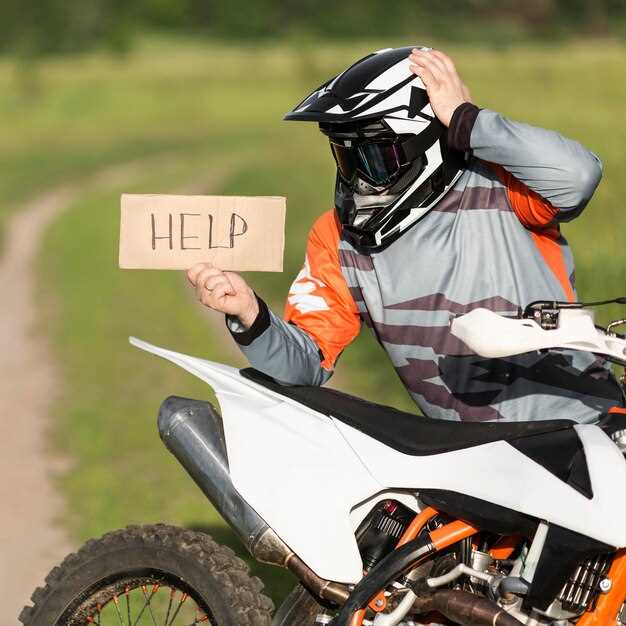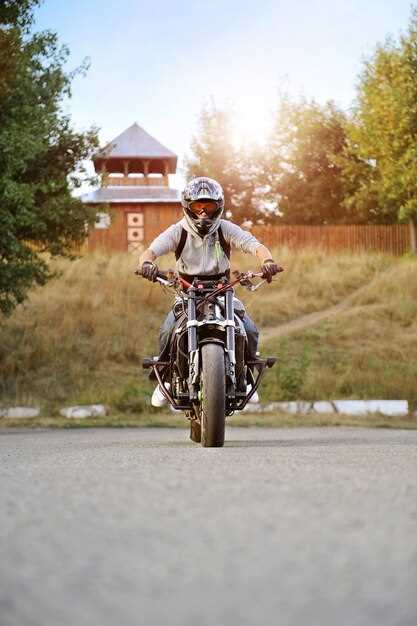
For beginners looking to dive into the thrilling world of motorcycle racing, the journey can be both exciting and overwhelming. Racing is not just about speed; it requires a solid understanding of your motorcycle, the track, and safety precautions. Entering this sport can be daunting, but with the right tips and mindset, anyone can find joy and success on the track.
Before revving up your engine, it’s crucial to equip yourself with basic knowledge about racing techniques and motorcycle handling. Understanding the dynamics of your bike can significantly enhance your performance. This involves familiarizing yourself with essential terms and concepts that will be pivotal as you progress in your racing journey.
Moreover, safety should always be your top priority. From wearing the appropriate gear to learning how to fall safely, these elements are vital for beginners in motorcycle racing. The adrenaline rush is part of the experience, but being prepared will help you minimize risks while maximizing fun on the track.
Choosing the Right Motorcycle for Your Racing Journey

When embarking on your amateur motorcycle racing journey, selecting the right motorcycle is crucial for both safety and enjoyment. For beginners, the first step is to determine the type of racing you want to participate in, as this significantly influences your choice.
Standard and sport bikes are popular among newcomers due to their balance between performance and ease of handling. Sport bikes, while offering advanced features, can be overwhelming for those without experience. Therefore, beginner-friendly models that provide a comfortable riding position and manageable power output are essential. Look for motorcycles with displacement between 250cc and 500cc, as these are easier to control and allow for skill development without overwhelming speed.
Consider the weight of the motorcycle as well. Lighter bikes are generally more responsive and easier to maneuver, making them ideal for beginners. Additionally, a lower seat height facilitates confidence in handling the bike, especially during cornering and braking.
It’s also important to choose a motorcycle with a reliable braking system and good suspension. Both features enhance safety and improve handling at high speeds. Look for models with anti-lock braking systems (ABS) and adjustable suspension settings, as these can provide better control on the track.
Finally, factor in your personal style and comfort. A motorcycle that feels good to you is more likely to inspire confidence and encourage practice. Test different bikes to find one that meets your physical requirements and racing aspirations. By selecting the right motorcycle, you lay a solid foundation for a fulfilling adventure in amateur motorcycle racing.
Essential Safety Gear You Need Before Hitting the Track
Before you dive into amateur motorcycle racing, it is crucial to equip yourself with the right safety gear. The track can be unpredictable, and having the proper equipment can significantly reduce your risk of injury.
1. Full-Face Helmet: Your most important piece of safety gear is a full-face helmet. It protects not just your head but your face as well. Look for a helmet that meets the safety standards set by organizations such as DOT or Snell. Ensure it fits snugly and comfortably while providing maximum visibility.
2. Racing Suit: A one-piece racing suit made of leather or advanced textile materials offers vital abrasion protection. This gear should fit tightly to your body while allowing for a full range of motion. Many suits also come with built-in armor for extra protection at critical impact areas like elbows and knees.
3. Gloves: Invest in high-quality, gauntlet-style gloves designed for racing. These provide grip and control while offering protection for your hands and wrists. Look for gloves with padding on the knuckles and reinforced areas to minimize injury during a fall.
4. Boots: Specialized motorcycle racing boots are essential for foot protection. They should cover your ankles, have a reinforced toe box, and provide good grip on the bike’s controls. Make sure they are comfortable enough for extended wear without sacrificing support.
5. Back Protector: Adding a back protector to your gear can significantly enhance your safety. These are designed to absorb impact and reduce the risk of spinal injuries. Choose one that is adjustable, lightweight, and complies with safety standards.
6. Chest Protector: While racing, a chest protector can provide additional protection against impacts. It is especially useful if you find yourself racing alongside others, where the risk of collisions is higher.
In summary, ensuring you have the essential safety gear is vital for any amateur racing enthusiast. Prioritize your safety by investing in high-quality equipment that meets established safety standards, and always check that everything fits well before hitting the track.
Tips for Improving Your Riding Technique in Competitive Settings

Participating in amateur motorcycle racing requires not only speed but also skillful handling of the bike. To enhance your riding technique in competitive environments, consider the following strategies:
1. Master the Basics: A solid foundation is crucial. Focus on essential riding techniques such as cornering, braking, and throttle control. Practice these fundamentals regularly to build muscle memory and confidence.
2. Understand Your Bike: Get familiar with your motorcycle’s characteristics. Each bike behaves differently; knowing its strengths and weaknesses can help you make better decisions during a race. Pay attention to suspension settings and tire pressure for optimal performance.
3. Body Positioning: Your body position influences the bike’s performance. Keep your body low and close to the bike, especially while cornering. Shift your weight appropriately to maintain balance and control, which is vital when navigating tight turns.
4. Anticipate Track Conditions: Races can vary due to weather conditions and track surface. Stay alert and adjust your technique based on track grip levels. Be cautious of slippery areas and adapt your braking and acceleration accordingly.
5. Smooth Inputs: Avoid jerky movements while riding. Gentle and smooth inputs on the throttle, brakes, and handlebars lead to better stability. Practice transitioning between these controls to maintain traction and fluidity throughout the race.
6. Use Vision to Your Advantage: Look ahead and focus on where you want to go, not just directly in front of you. This practice helps in planning your line through corners and reacts more effectively to changes in your surroundings.
7. Analyze and Refine: Review your riding after practice sessions and races. Utilize video analysis to identify areas for improvement. Document your progress and make adjustments to your techniques to enhance future performance.
8. Stay Physically Fit: Maintaining a good level of fitness is essential for endurance and agility. Specific exercises that focus on core strength, flexibility, and cardio can significantly improve your control and responsiveness on the bike.
Implementing these tips will not only improve your riding technique but also boost your confidence in competitive situations. Stay dedicated to your development, and you will see improvements in your amateur racing skills.
